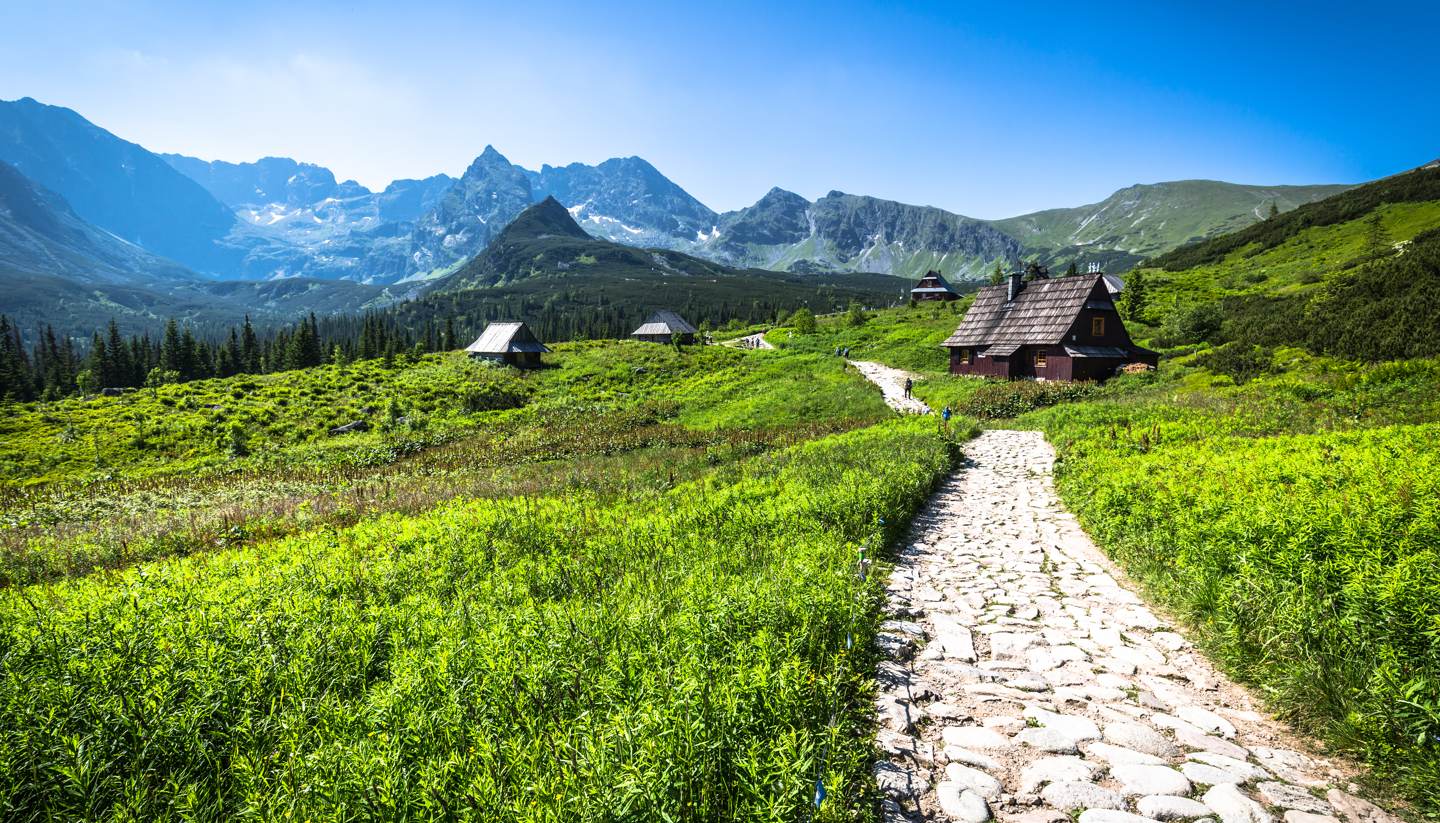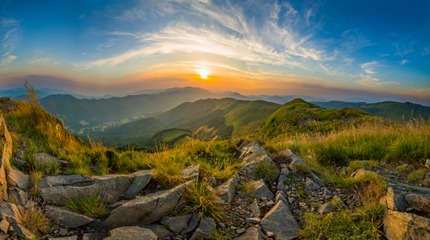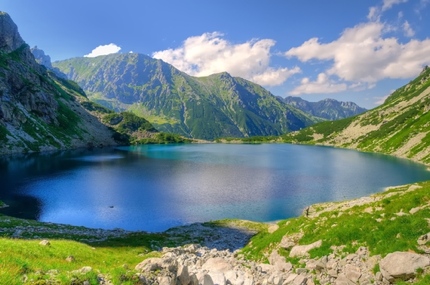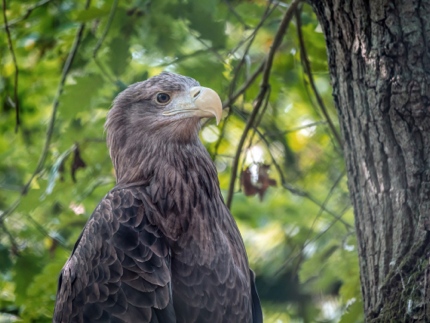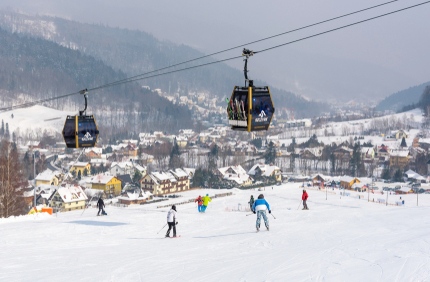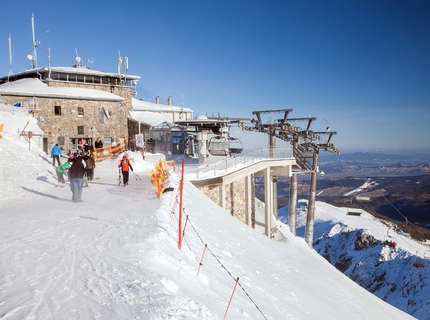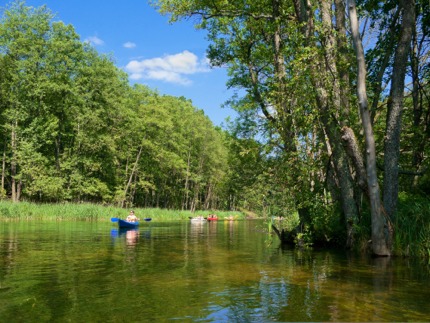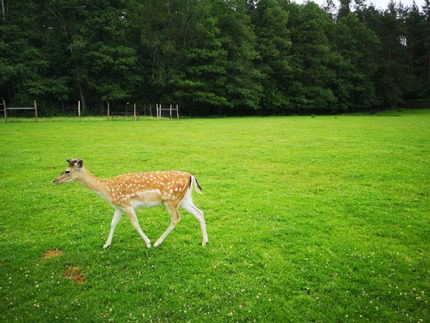From glorious mountaintops to graceful waterways, Poland's virtually untouched countryside gives you ample opportunity to explore
Poland has long been attracting city slickers to its vibrant cities such as Warsaw, Kraków and Łódź, but its stunning countryside also deserves a mention. In this article, we look at some of the best places to hike, ski and kayak in Poland.
Hiking in Poland
Poland has some 24,000km (15,000 miles) of marked trails for hikers of all abilities. You can spend a day walking among the lakes in Kaszubski Park Krajobrazowy (Kashubia Protected Landscape Area) or tackling the high peaks of the Tetra Mountains. The best time to hike is from June to October. Here are our top three recommendations:
Bieszczady Mountains
140km (90 miles) south of Rzeszow and near the Poland-Ukraine borders, the spectacular Bieszczady is criss-crossed with trails. One of the most popular day hikes starts from the picturesque Wołosate Valley, leading to Tarnica (1,326m or 4,416ft), Halicz (1,333m or 4,373ft) and Rozsypaniec (1,280m or 4,200ft), before returning to Wołosate. The hike should take about eight hours and can be quite challenging in places, but the views from these peaks are very rewarding.
Tatry Wysokie (Tatras Mountains)
The Tatras are the highest mountain range in the Carpathian Mountains, reaching 2,499m (8,199ft) at the highest point. Base yourself in the mountain resort town of Zakopane as from here, you can take on a diverse range of trails. Among them, the Zakopane to Czarny Staw Gąsienicowy route is our favourite as it takes you through lush meadows and pine-scented forests, before arriving at the stunning Czarny Staw (Black Pond). The journey takes about five hours.
Beware that the trails in the Tatras are all colour-coded and the meaning of each colour is as follows:
- Blue: indicates long-distance trails
- Red: indicates main or noteworthy trails
- Black: indicates short trails or the final stage of a trail
- Green: a direct trial going to a particular place
- Yellow: connecting trails
Woliński Park Narodowy (Wolin National Park)
For those who enjoy taking in the fresh sea air during a long walk, Wolin National Park is an excellent option. Nestled in the north-west corner of Poland, on an island in the Baltic Sea, Wolin features impressive cliffs dropping dramatically into the sea below. Away from the coast, beech forests nourish a wealth of fauna and flora, as well as rich birdlife – over 230 species are seen here, including the white-tailed eagle, the symbol of this park. There are three well-marked trails for you to choose from – all leaving from the main town of Międzyzdroje. It is best to get a copy of the trail map from the park headquarters in Międzyzdroje before you start.
Skiing in Poland
It is an open secret that Poland is one of the best places in Europe to learn skiing, thanks to cheap lessons and an abundance of multilingual instructors. Hence, a ski holiday in Poland is immensely popular among novices and budget-conscious skiers.
When it comes to après ski, check out local specialities like grzaniec (mulled wine) and oscypek (smoked and salted sheep cheese).
Szczyrk Mountain Resort
Arguably the most popular ski resort in Poland, Szczyrk is relatively low in altitude, ranging between 460-600m (1,510-1,969ft), but snow cannons help to ensure that there is sufficient covering from December to late-March. There are over 25km (16 miles) of various pistes here, but if you purchase a joint ski pass that allows access to the nearby Beskid Sport Arena, you get 40km (25 miles) of pistes.
Szczyrk is about 106km (66 miles) southwest of Kraków. If you rent a car, the journey takes about 2 hours.
Kotelnica Białczańska, aka Białka Tatrzańska
Comprising three main ski areas (Kotelnica, Kaniówka and Bania), all accessible with a single pass, Kotelnica Białczańska has 21 groomed runs ideal for beginners and intermediate skiers and snowboarders. Cross-country enthusiasts won’t be disappointed either, as trails in various lengths are available, with the longest one about 4.4km (2.7 miles).
Kotelnica Białczańska is about 102km (63 miles) south of Kraków, and there is a bus service serving this route. The journey takes about three-and-a-half hours.
Zakopane
If you like choices, base yourself in Zakopane and use your ski pass to access one of the five ski areas around here. Out of these, Nosal Ski Centre, with a variety of slopes for beginners and intermediates, is just 4km (2.5 miles) away. Once you’re ready to face steeper runs, take a cable car to the Kasprowy Wierch peak with 15km (9 miles) of pistes.
Zakopane is about 110km (68 miles) south of Kraków. The journey takes about 2 hours. You can also get to Zakopane from Poprad-Tatry Airport in Slovakia.
Canoeing or Kayaking in Poland
Poland’s many waterways offer great opportunities to paddle for hours or days, giving you plenty of quiet moments and freedom to observe wildlife from a close distance. Summer is the most popular period, but you can also kayak in late spring and early autumn.
Krutynia River
Often called the ‘most beautiful kayaking trail in Europe’, Krutynia’s kayaking route runs from Zyndaki to Ruciane-Nida, covering a distance of 102km (63 miles) and requiring eight days to complete. There are campsites, cabins and hostel rooms along this scenic route. We particularly like the section between Lake Krutyńskie to Ukta. When you get to Ukta, take an excursion to the Wild Animal Park in Kadzidłowo, which is 3.5km (2 miles) away. The park features over 100 species of animals, including bison, deer, donkeys, lynx, wild boars and wolves, but the highlight is undoubtedly its ‘Born to be free’ programme, which protects and reintroduces animals back to the natural habitats.
Czarna Hańcza and the Augustów Canal
This 110km (68 miles) long journey is divided into two stages – you kayak down the Czarna Hańcza (Black Hańcza) river first, before switching to the Polish side of the Augustów Canal – the Canal actually runs to Grodno Region in Belarus, but most people stop before the border crossing, since Belarus only allows visa-free entry to most nationals when they enter through Minsk National Airport.
Most kayakers complete this journey in 12 days, paddling an average of 11km (7 miles) a day. The distance may not be huge, but it does allow quality time to savour the beautiful sceneries.
Before you go, check out our Poland Travel Guide.
